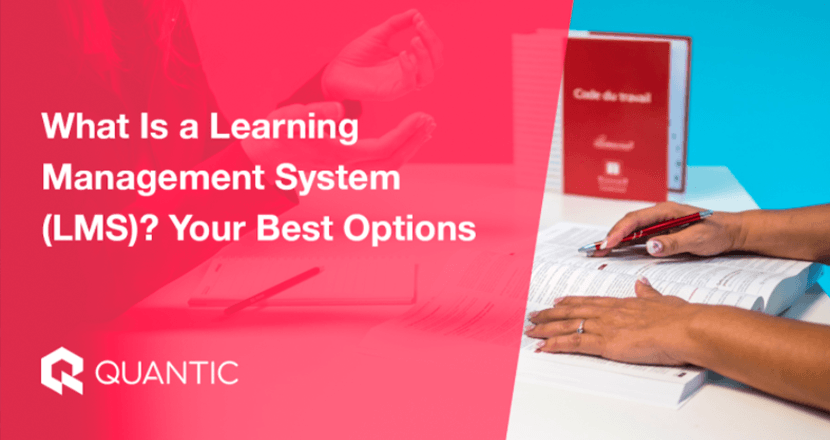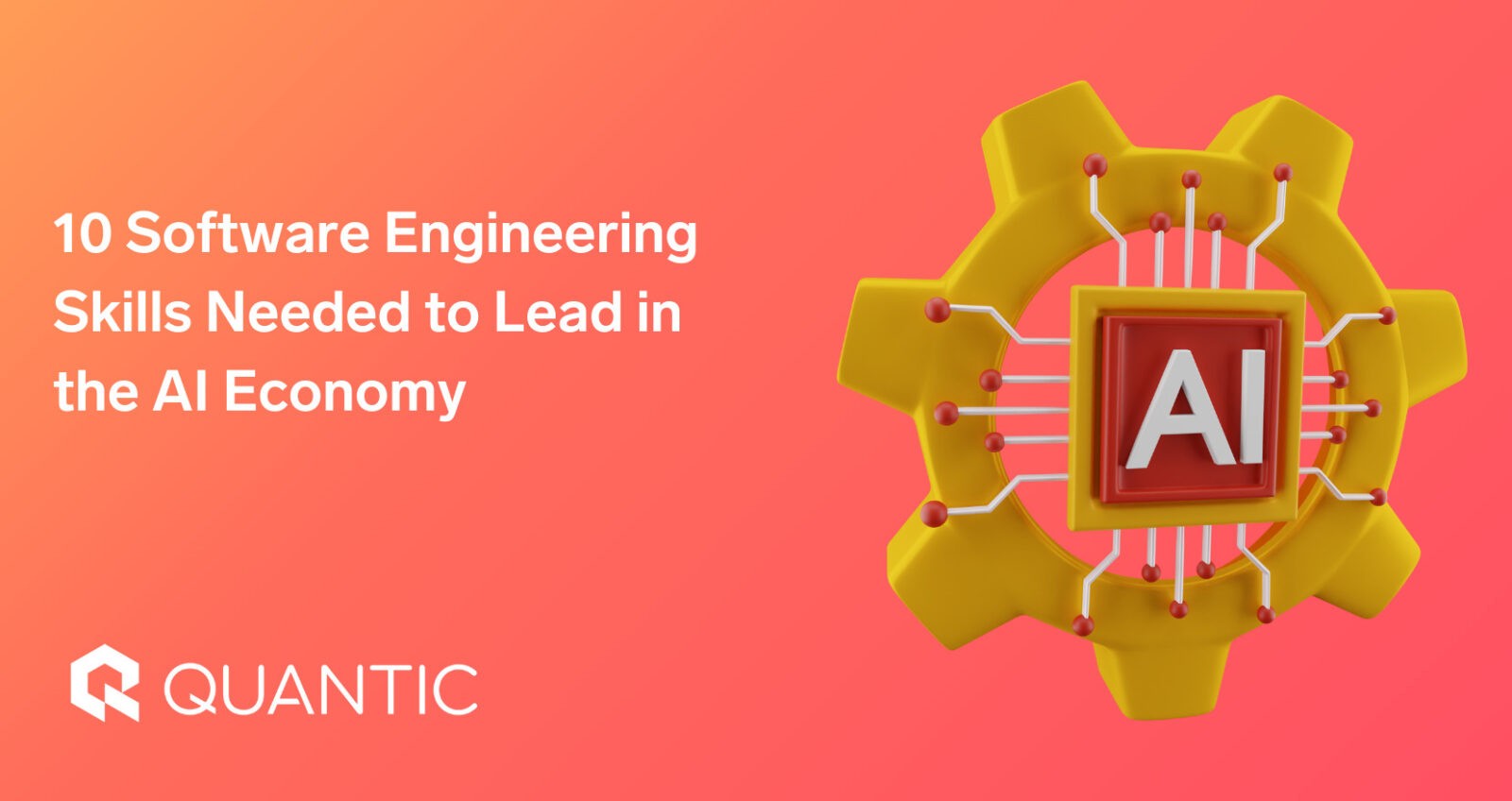CAREER PLANNING
What Is a Learning Management System (LMS)? Your Best Options
Human Resource (HR) teams are continuously adapting technology to meet their staff training needs.
Globally, many top Fortune 500 companies have adopted self-paced e-learning courses to aid their employees’ training.
However, there’s still a problem:
Many industries have already established a set-up for HR and Learning and Development (L&D) departments.
Weaning off these learning tools and legacy software routines for newer technological innovations involves great adaptability.
It gets more complex when this unlearning, learning, and adoption cuts across multiple levels.
By now, you’ve probably settled on your L&D plan but don’t know how to get everyone going. Your system may end up being unused in such a state and your targets not being met. That’s because there’s a need to properly scope your learning goals.
To break through, you need to first prepare your employees for a shift in the digital direction. Your training programs should aim at a personalized experience that they’ll readily embrace.
Finally, you should follow up on learner progress and improve the learning delivery to an overall advantage.
Today, you’ll learn more about what an LMS system is and how to deploy it to maximum advantage.
An obvious question would then be:
What Is a Learning Management System?
An LMS delivers content in different formats through online courses and live instruction sessions.
Many online LMS platforms have also embraced sophisticated Artificial Intelligence (AI) to understand learner behavior and craft personalized experiences for participants.
What Is the Purpose of a Learning Management System
At its simplest level, a learning management system helps teams gather, distribute, and follow through with learning activities. It should cover the following:
Onboarding: New employees would benefit from an LMS to help them quickly find their way around their new office and associated procedures at the workplace.
Development and Retention: An LMS could ensure employees have the right skills, knowledge of product upgrades and changes, and have an understanding on company trends.
Compliance Training: An LMS would make sure employees receive training geared, for example, towards recurrent certification and mandated procedures. This helps mitigate risks and avoid any issues related to compliance.
There is, however, a common misconception that we need to clear before going further.
LMS vs. LCMS (Learning Content Management System)
Well, here’s the difference:
An LMS is a platform used to assign, deliver and track course completion. It’s simply a locked store of published content — updates usually are managed outside the system.
The end goal is to measure and give feedback on course completion. It doesn’t factor in content authors who constantly need to produce, maintain, and optimize content.
On the flip side, an LCMS is a platform that supports the entire training content cycle: authoring tools, publishing, delivery, and measurement. It provides a collaboration hub where content can be synced and re-used in many formats.
This separation of content from presentation frees it and allows re-use in different formats, which can be distributed in or out of an LMS.
At the same time, it provides a central content and asset repository and supports single-source publishing.
Just remember, it’s not simply a matter of one versus the other.
Both serve different purposes. However, a healthy blend of both platforms can give any HR organization a complete end-to-end solution.
Having said that, let’s talk about the benefits.
Learner Management Software Benefits
Business operations rely on collaboration and especially corporate training. Having a suitable learning activity management system can help motivate employees, increase productivity and improve learning outcomes.
The following vital reasons are therefore worth considering when seeking LMS integration into your current HR operations.
Data Integrity
Data redundancies waste time and lead to training inefficiencies. An intelligent LMS system comes with data integrity tools to ensure data is entered consistently and accurately.
Personalized Online Training
You certainly would love access to advanced analytics for each employee, including past performance, job responsibilities, and online training progress.
Better visibility means you can recommend training based on an employee’s necessary skills, work tasks, and professional aspirations. You, therefore, have a comprehensive view of an employee’s work history and a holistic view of your staff.
This helps you know top performers who can then be allowed to advance more.
At the same time, you’ll identify employees who are struggling for the sake of knowing where they may be assisted.
Convert Trends Into Actionable Goals
As employees engage with your LMS, you can spot patterns and trends of data and convert them into actions that improve user performance and reduce employee challenges.
For example, department A is struggling with low employee retention. You can leverage data from department B, which does better, and boil that down to more engaging content for department A.
Leverage Big Data for Effective Online Training Analytics
Integrating LMS with your current HR system helps you analyze data quickly and more efficiently. You’ll then have more insight into your employee pool and the type of training they require.
For example, you could consider an employee’s job description and track training gaps based on their LMS training progress. You’ll therefore provide additional training resources to help them scale appropriately.
Then there’s the notable advantage of a streamlined system maintenance experience. Big Data can be migrated between your existing system and the LMS, ensuring that the information is automatically synced and up-to-date.
Improved HR Training ROI
Time and the ability to quickly collect actionable data all lead to a profitable investment. You will only choose online training initiatives that make the most impact and discard what’s irrelevant.
You’ll have to carefully do your homework to know what works best for you while avoiding a high learning curve or a cluttered interface.
Next, let’s consider the learning phases and how an LMS can aid in the process.
LMS-Learning Process
David Kolb’s Learning Cycle reveals that there are four main phases of learning.
The stages can be summarized as:
- Review: Reveals the current training context and helps learners bridge the knowledge they have with the new knowledge they seek.
- Learning: Defines course content, including attitude, skills, and knowledge.
- Application: The learner applies the knowledge and skills obtained.
- Adaptation: Helps the learner make a change to their work environment based on their learning.
But then, how can the phases above be applied in the context of an LMS?
Let’s review the phases, one by one.
The Review Phase
At this stage, you assess what the user already knows using the pre-assessment procedure. For example, you could include a set of 10-20 questions. If an employee passes this test, they can proceed to the actual training. Otherwise, consider pre-requisite training before introducing new concepts.
An example application would be an induction training program. New employees are given a virtual video tour of the company.
The Learning Phase
Here, the user is introduced to core learning procedures and processes geared towards reinforcing learning objectives. A blended learning strategy can be adopted, which combines classroom sessions with e-learning courses to accelerate proficiency.
For those with little time, microlearning courses can be adopted, short, and focused on a single objective. These could take the form of animated videos and short, strategic or interactive games.
Moreover, this has been known to align with short concentration spans and gives users the exact information they need to fulfill one actionable objective.
The Application Phase
This phase helps employees practice to cement their knowledge based on their newly acquired knowledge and skills.
Simulations are most appropriate for this phase, since they are a replica of the real world. Consequently, employees can experience real-life job circumstances without the risk of failure.
For example, consider employee training on computer networking to connect and troubleshoot internet disruption. Instead of tampering with existing equipment, they could be introduced to Packet Tracer, a “Watch, Try, Do” simulator that mimics the real world without the risks.
They will watch, try following prompts, then finally perform the actions themselves. In this way, performance-based assessments are conducted, which demonstrates knowledge in action.
The Adaptation Phase
At this final stage, employees transfer what they’ve learned to the actual working environment. LMS can help refresh knowledge as well as support job performance.
One thing, though: repetition is key.
The Curve of Forgetting reveals that during day 1 of learning, retention stands at 100%. It goes down to 50-80% on the second day, and so on. By day 30, retention is at a mere 2-3%.
Figure 2: The Forgetting Curve
Therefore, it’s important to consider regular refresher training to reinforce learning, revise knowledge, and mitigate the Forgetting Curve.
Micro-learning and mobile learning are preferred methods at this stage since they deliver material in small bits and fit into your employee’s busy schedule.
At the same time, consider formats such as infographics, how-to videos, interactive PDFs, and checklists. These come in handy and should be easily accessed by the learner at the time of need.
Consider a sales employee. At this stage, a PDF of the latest prices and offers is a powerful reference when dealing with a client and helps them act more confidently.
LMS Management
There are best practices to be considered to run an LMS effectively.
Role Assignment
This is the first and most crucial step in managing LMSs. You’ll assign people to critical departments such as HR, Operations, and IT. Accountability is paramount to ensuring everyone does their duty well.
A good LMS will make it easy to perform administrative duties such as registering users, giving them access according to level, and performing instruction tasks such as creating and managing courses.
User On-Boarding
Getting users to start with an LMS poses multiple challenges. Consider leaders who aren’t tech-savvy and learners who seemingly fear the complexity of the system.
Therefore, it’s crucial to market the LMS internally so that the benefits are well highlighted. Incentives can also be introduced to encourage the learners in the process.
On the administrative side, familiarity with the system is crucial to simplify adding users to the system.
Creating and Publishing Content
Compelling content has been known to boost employee engagement by up to 18%. However, the expertise required to reach these standards can be extensive.
Beyond PowerPoint, creators could think of interactive animation, gamification, videos, audio, and images to spruce up the content delivered.
Course creation can take considerable time, especially when the content is custom-made to fit a specific organization’s needs.
You may develop a schedule with reasonable delivery dates. Then, make a follow-up to ensure effective delivery in time.
The next step involves publishing content, which requires a knowledge of the LMS tools. A friendly UI is crucial, which should also come with accessibility features where possible.
Beyond this, consider third-party integration with related systems.
Reporting Progress
A crucial element of an LMS is the data that it captures, including course progress and performance in tests. A step further is the analysis of the data.
Through appropriate graphs and charts, reports can be obtained that give an accurate representation of LMS activities while empowering an organization to make data-driven decisions and adjustments.
Handling IT Resources
When an LMS is ready to be deployed, tasks such as integration with a HR System, server maintenance, technical support, and security should be considered. These will be handled by IT.
An honest audit of IT resources is appropriate at this point, as related to the LMS, and in such a way that the LMS’s effectiveness will not be compromised. Alternatively, the organization could consider outsourcing to the IT team from the LMS provider.
End-User Support
LMS users will have questions on how the system works. There should be a way to let users know how to use various LMS features, from simple to complex ones. For example, if there is a payment extension, the organization needs to know how to handle the payment flow.
What Is LMS Training?
Do You Need an LMS Training System?
Are you hesitant about whether an LMS training system will work for your organization? If so, you need to ask yourself a few questions:
How much do you spend in training each year? Traditional training means that you cover transport expenses for facilitators (or, in some instances, the employees themselves), booking physical venues, paying tutors, and covering other hidden expenses.
An LMS will provide a more effective way to track student progress and reduce training costs.
How streamlined is your course delivery? An LMS provides material, content, and instructions in one central portal.
How do you track performance? Physical training is OK, and paper questionnaires are also an option used with most businesses. But how do you manage this data over time, say five years down the road? An LMS software will have performance indicators for progress tracking, knowledge acquisition, and ROI.
Do you require regulatory compliance? Many companies require training assessments to cover compliance. Examples lie in the energy sector, including oil and gas. Compared to the traditional approach, the data and progress reports greatly enhance this task.
What Are Examples of Learning Management Systems?
A cloud-based LMS is hosted by a vendor on their servers. The end-user accesses it via a browser portal. It does not require specialized software or digital investment to operate.
Adobe Captive Prime is a good example. Users pay based on their use.
Software-as-a-Service(SaaS) LMSs are centrally hosted by a software provider. Users buy licenses by subscribing periodically. The pricing model often considers the user base and functionalities accessed.
D2L Brightspace is an example of SaaS that supports learning for K-12 and higher education institutions.
Open-source LMS. The creator has made the source code available for developers to modify accordingly. As a result, there is no licensing fee. However, in some cases, you may incur downloading costs.
Moodle is the most popular open-source platform. The software can be downloaded and modified free of charge.
Enterprise LMSs help corporations embrace online learning. SAP Litmos is an example of an ELMS.
Example LMS Courses
The higher education market has been empowered by a plethora of courses that meet various needs. The closest example is the NKI distance education network, which is aimed at helping develop employee competence.
Online executive MBA programs are also an area where an LMS is heavily utilized. This provides flexibility and self-paced learning for busy professionals. Quantic’s online EMBA is proof of this.
The lingering question in your mind now might be:
What Are the Best Learning Management Systems in 2021?
Not only should you properly consider aspects such as the user interface, but you should also have a set of metrics that help you track performance and tweak accordingly.
This will help you make the most of your training expenditure.
A solid LMS will provide high rewards and build loyalty while remaining affordable. Similarly, employee tuition assistance reduces turnover and helps attract qualified candidates.



